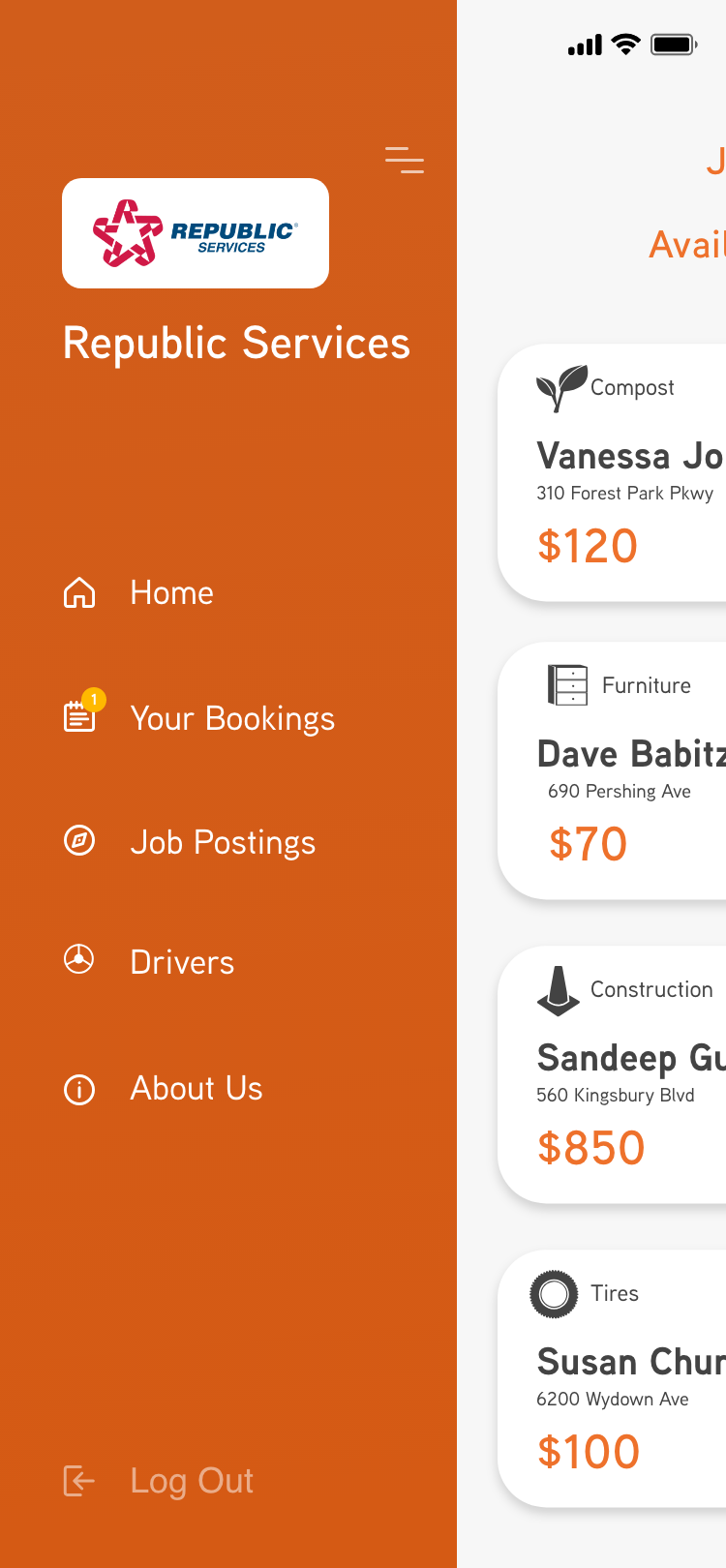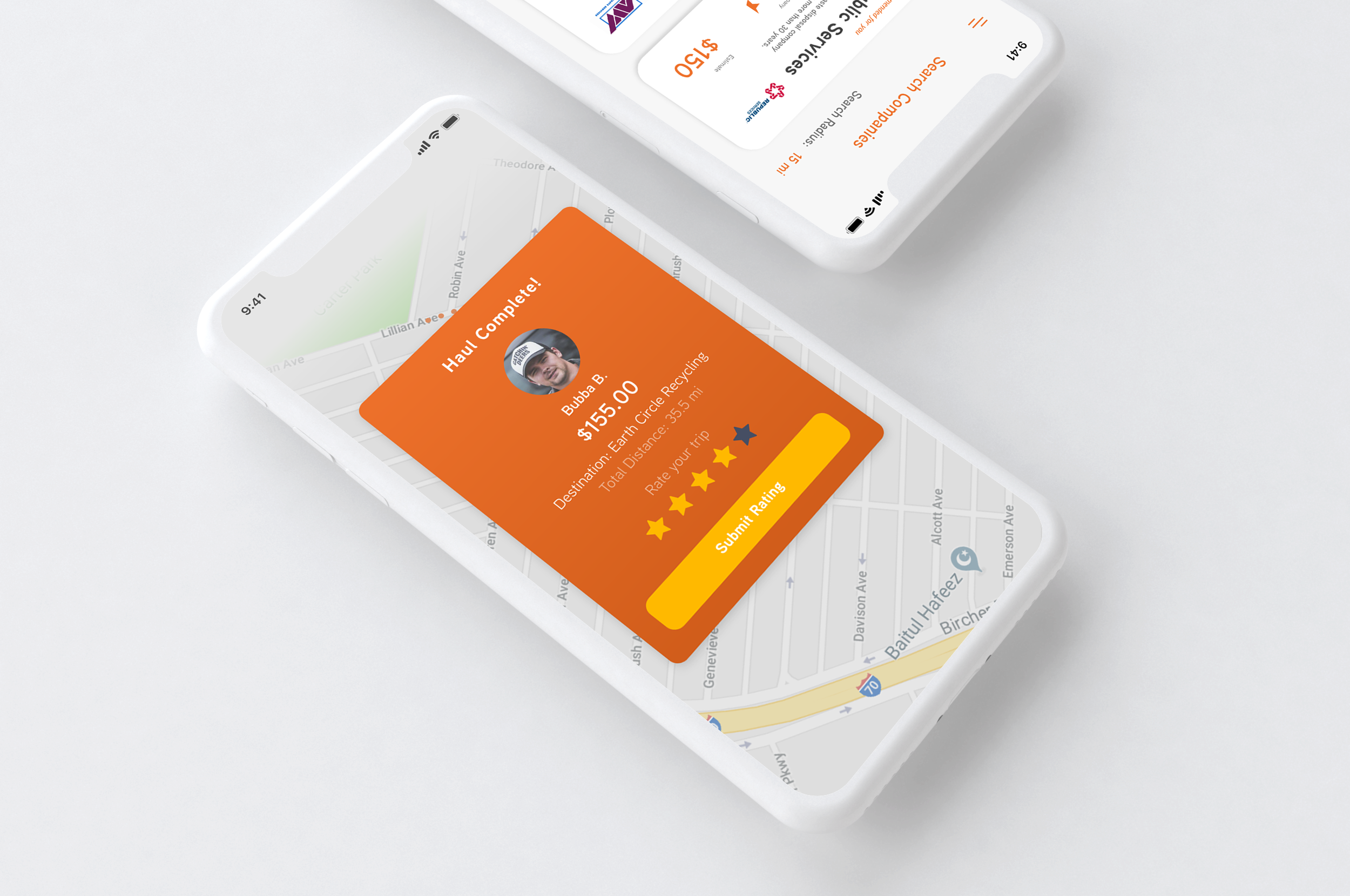Time Frame
3 months
Tools
Adobe XD
Adobe Photoshop
TL;DR
The Expedia for legal trash dumping.
Overview
Trash Talk is a social design project my classmates and I worked on which tackled the issue of illegal waste dumping in St. Louis. Over the span of 3 months, we worked on-site and gathered user data from police offiers, waste management, and citizens who were most affected. In the end, we concepted an app which connected users to local trash hauling companies near them, making legal dumping easier and more accessible, as well as expanding the reach of these legally certified trash haulers by increasing their visibility.
Background
From government organizations to commercial trash haulers to private citizens, the issue is systemic and has affected all of those sectors. Additionally, illegal dumping is heavily reflective of the socio-economic disparities of St. Louis, and the poorest areas of the city are the most affected.
My Role
From the initial concept to presenting our minimal viable product, I worked in a team with 2 design students and a computer science student. I was in charge of creating a system to gather usage data from trash haulers during the prototyping phase and was heavily involved in the ideation, wireframing, and visual design of the app.
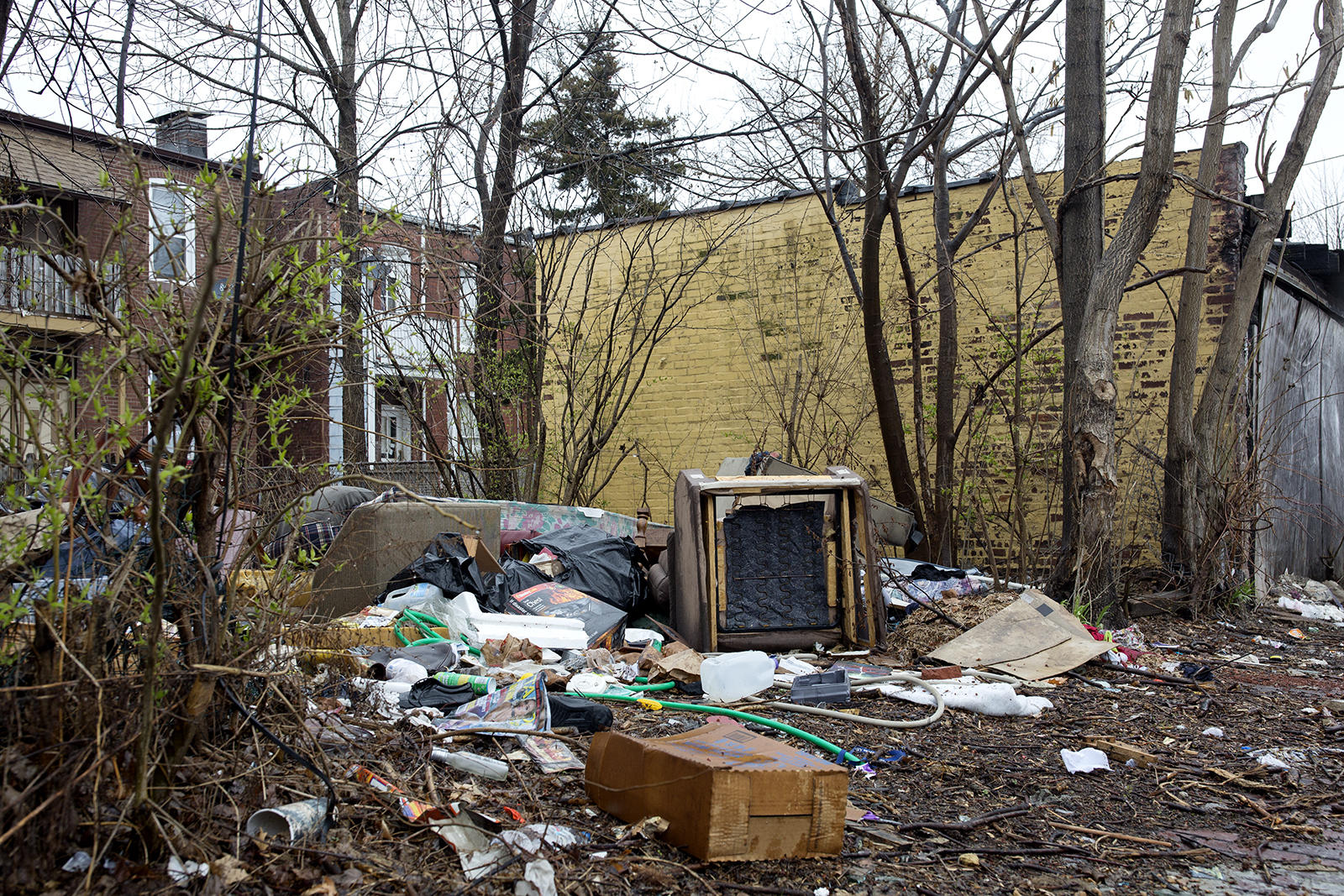
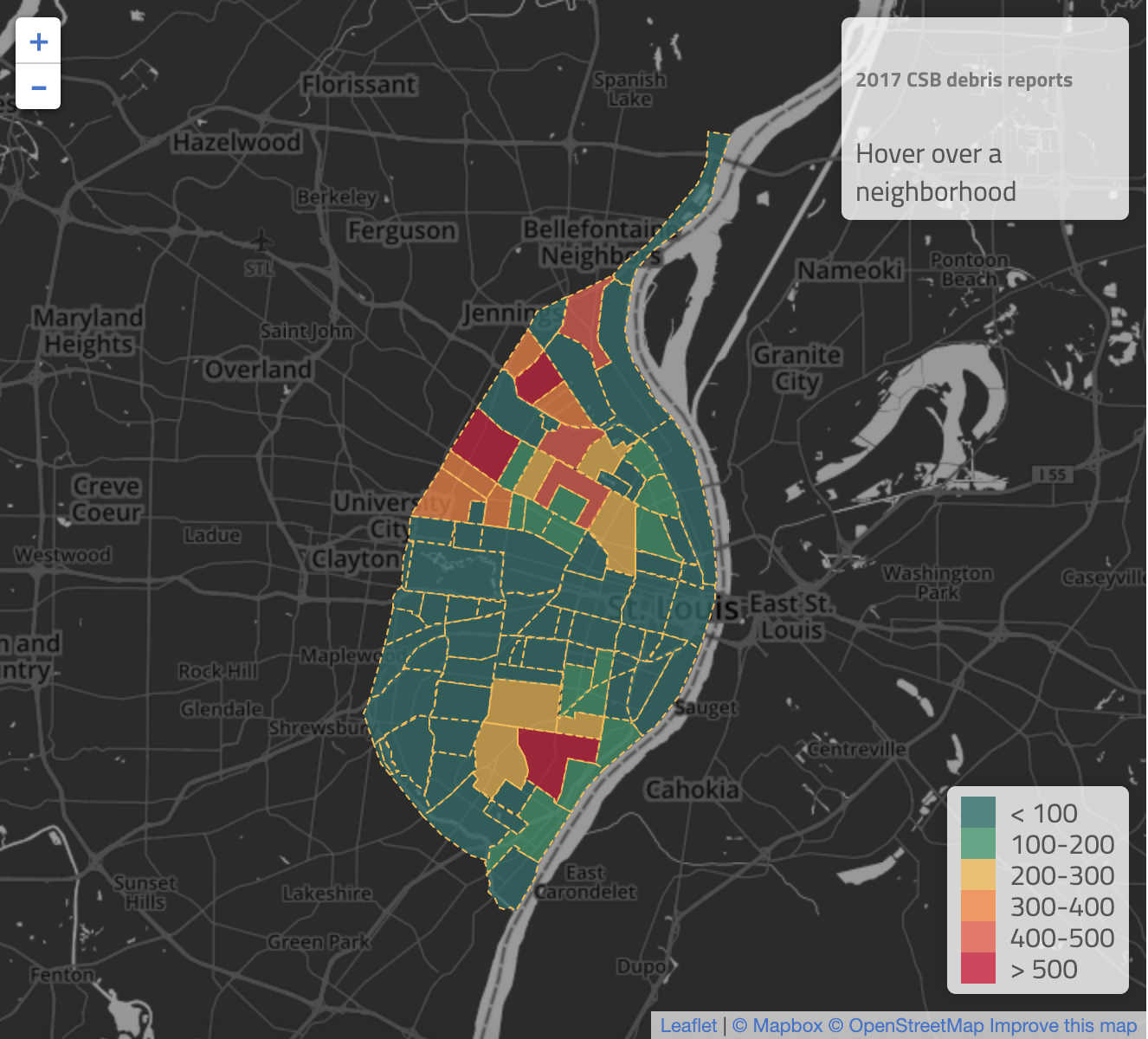
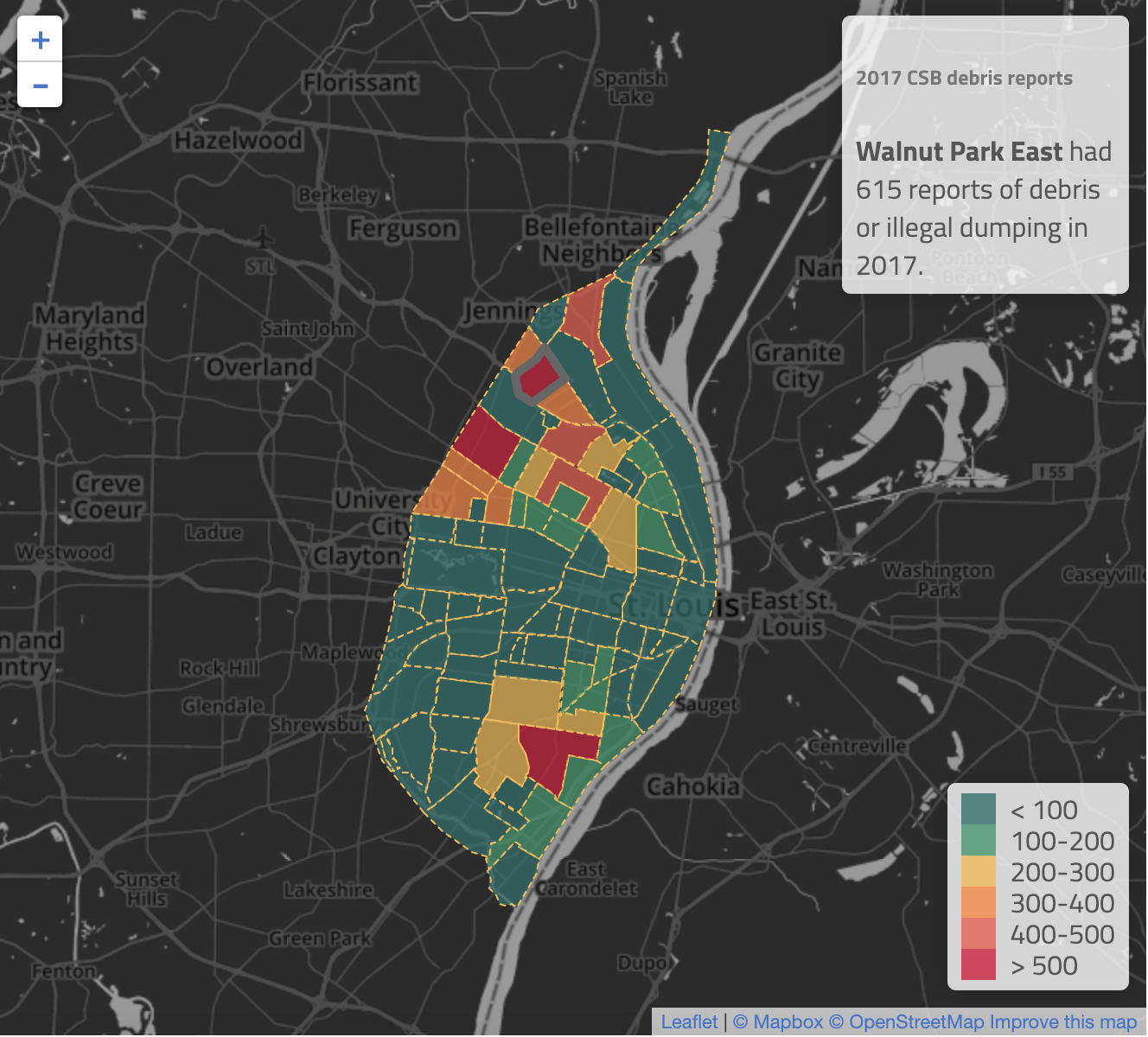
The Problem
How can users be easily connected with affordable, convenient, and quick methods of disposing trash legally?
PAIN POINTS
Private Citizens
1: Produce trash that is hard to dispose of.
2: Cannot find an easy and quick way to find the right person to reach out to.
3: Find illegal dumping as a more convenient way to dispose of garbage.

Trash Haulers
1: Small, local trash hauling companies have a limited clientele.
2: Do not have well established means of communication or advertising.
3: Are unsuccessful in reaching out to new clients and fail to expand their reach within the community.
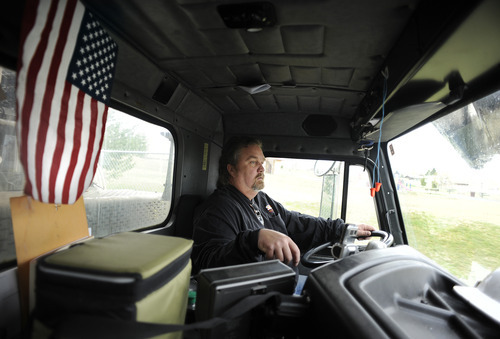
Police Department
1: Severely understaffed in catching and prosecuting people dumping illegally (with literally one person who works in the Trash Task Force)
2: Installing infared cameras and equipment to catch perpetrators is expensive and low on the Police Department’s operational budget
3: Maximum fine if caught is $500, which is sometimes lower than the cost of hiring a dump truck

Our Original Concept
Our original concept for the app was to utilize the “gig economy” model and allow anyone with space to haul material for users who require trash picked up. Haulers could therefore be part-time and wouldn’t need a special license or be professionally-certified; this would theoretically decrease costs and connect customers to a legal method of trash disposal. It would be similar to an “Uber for trash” where people could work as trash haulers part-time and help with members of their community.

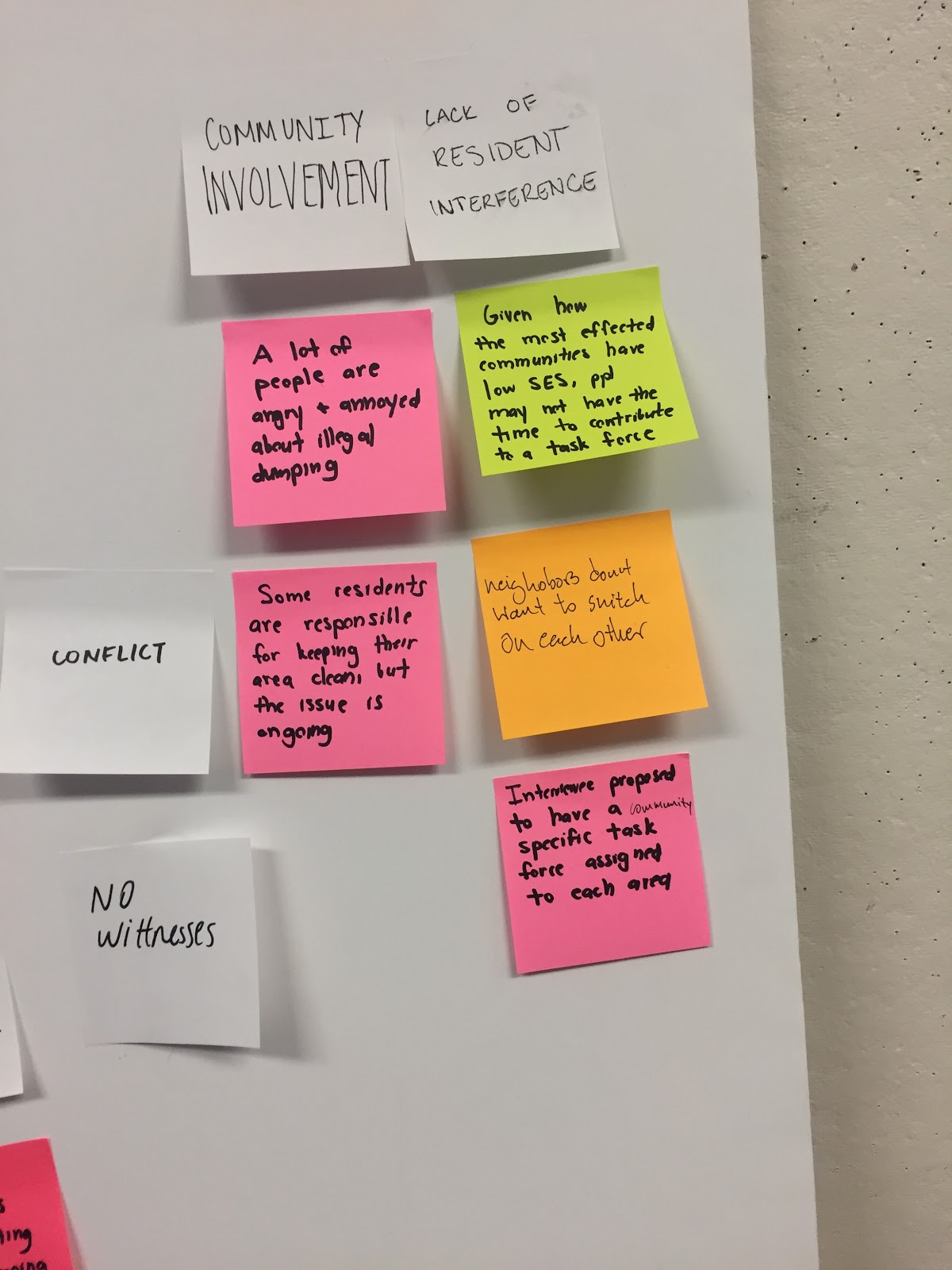
However, once we started talking to professional hauling companies and citizen watch groups about the idea, they were concerned about the lack of accountability with having an unlicensed hauler taking out your waste. One of the owners of a waste disposal company put it most succinctly:
“We don’t a part-time bubba picking up your trash without any insurance and throwing at the side of the street without caring where it goes.”
Cindy, SKIPS Junk Hauling
OUR SOLUTION
Our app would therefore be a streamlining service that provides users services to existing waste disposal companies. By letting the user compare the cost of each company in the app, it improves awareness and communication between the two parties and therefore provides a solution to the communication issue which is central to the lack of people using legal hauling services.

The beginning of our User Flow.

Our final User Flow. We envisioned a linear system for the User to order hauling services.
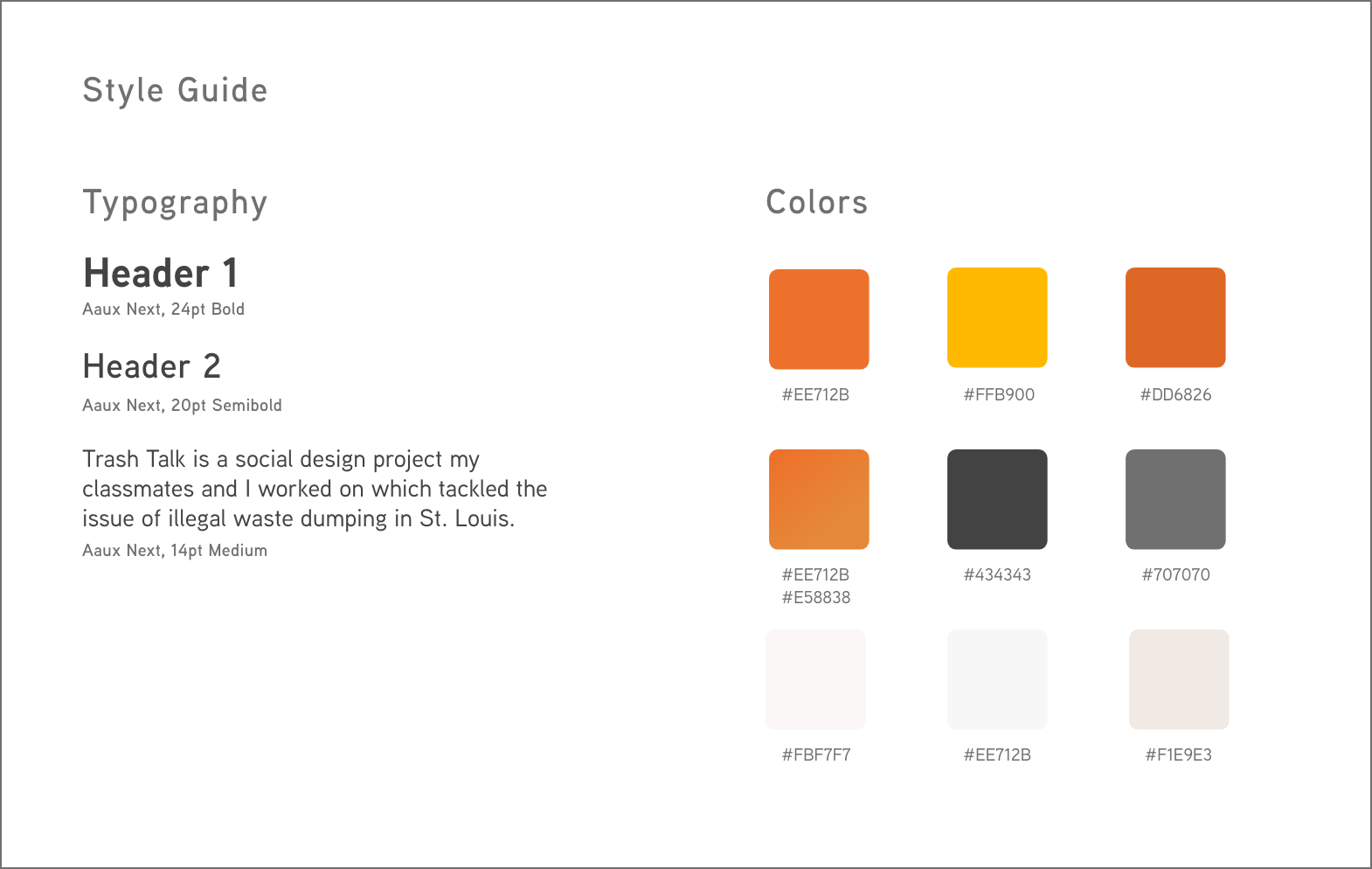
Style guide.
USER OVERVIEW
We put low-fidelity prototypes in front of users with the goal of finding out whether they valued convenience or cost when it came to waste disposal.
Insights
1: Wants an option of choosing to take the trash to somewhere other than a landfill (donating to goodwill, recycling, compost).
2: Wants the payment to be optimized: credit card/PayPal vs check.
3: Wants the option of not being there for pickup – can leave trash by her house and hauler can come at a scheduled pick-up time
#1: Map on Initial Page
A user opening the app would want order a pickup as quickly and conveniently as possible. Presenting them with the map on start would allow them to do so immediately.
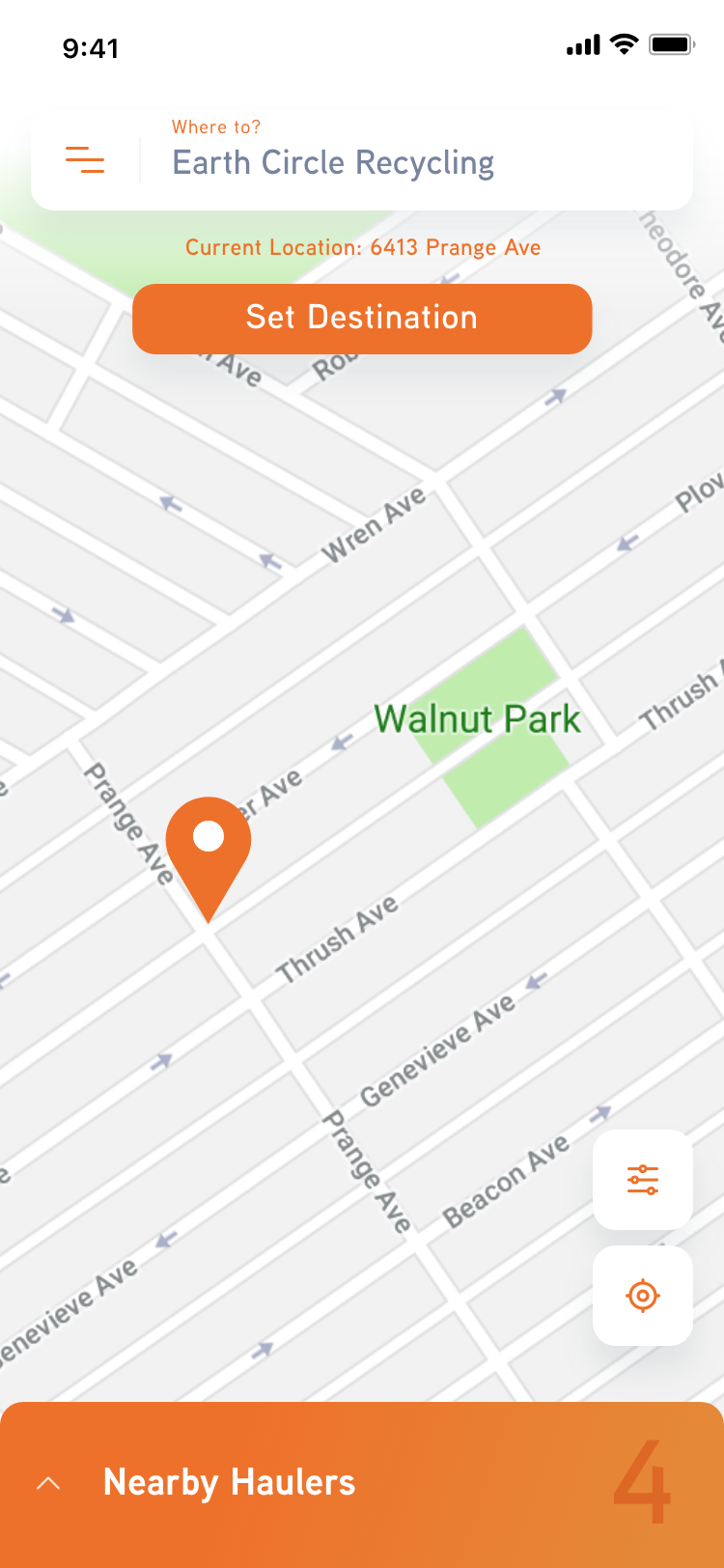
#2: Trash Categorization
By allowing the user to categorize the trash, it would allow the hauler services to better understand the equipment and storage capacity of the pickup, removing potential issues with having the wrong equipment. Another widely-requested feature by our test users was the ability to take a picture of the pickup, giving the haulers a better grasp of the quantity. A picture is worth more than a thousand words after all.

#3: Hauling Company Search
To make searching for a company as straightforward as possible while eliminating extraneous information, I presented them in a "cards" format. The price was the most important consideration according to our user tests so it's set in orange, making it the first thing the user would see.

#4: Driver Info on Map
Giving the user information about the ETA as well as a way to contact the driver was important because it improves communication between the user and client.

HAULER OVERVIEW
We put low-fidelity prototypes in front of users with the goal of finding out whether they valued convenience or cost when it came to waste disposal.
Insights
Instead of sending pickup request to the truck driver themselves, they would prefer to send the request to the office, who can then delegate tasks to each driver.
Allowing independent drivers to pick up and dump trash would not only hurt existing companies, but could further add to the illegal dumping problem.
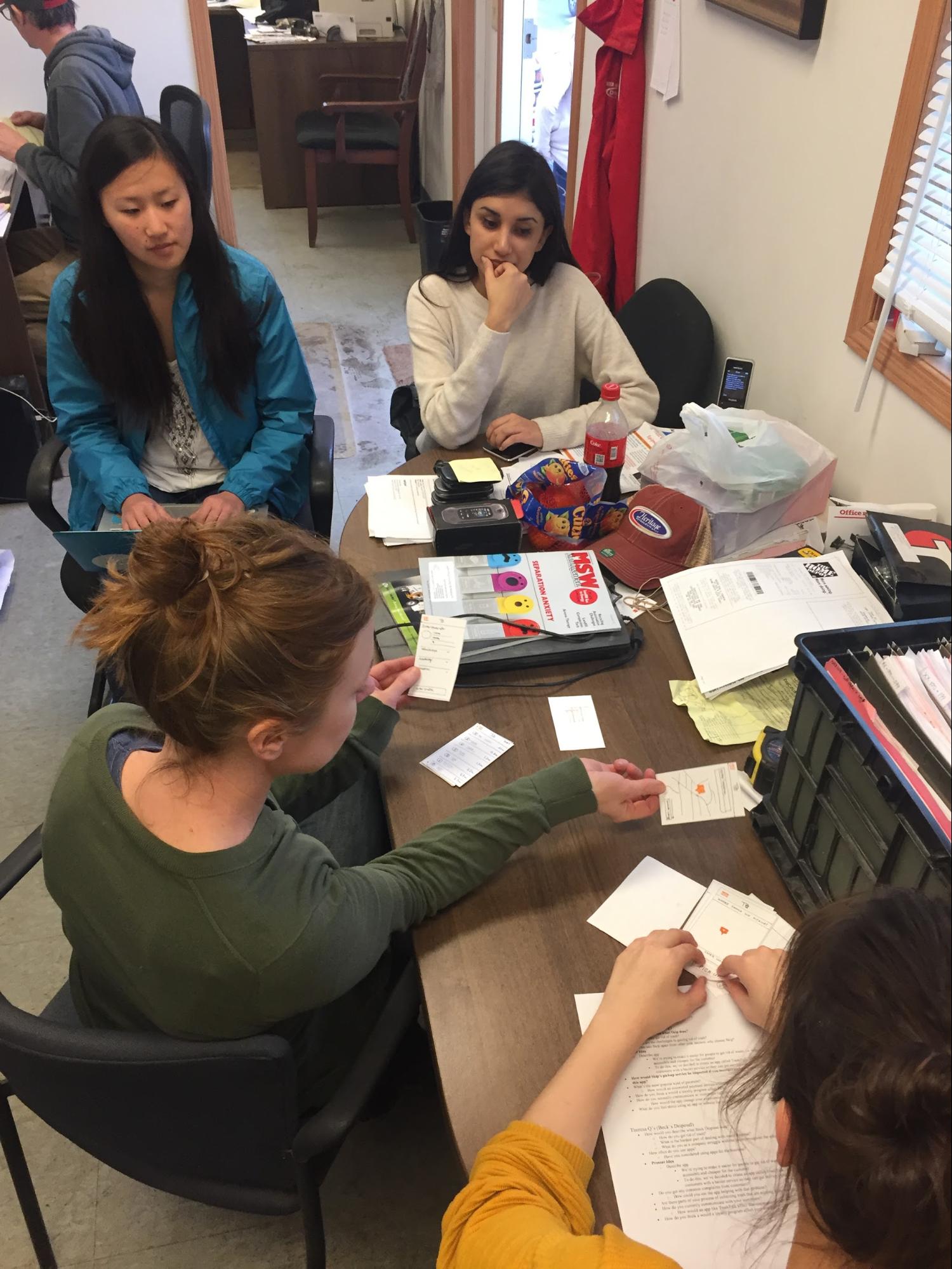
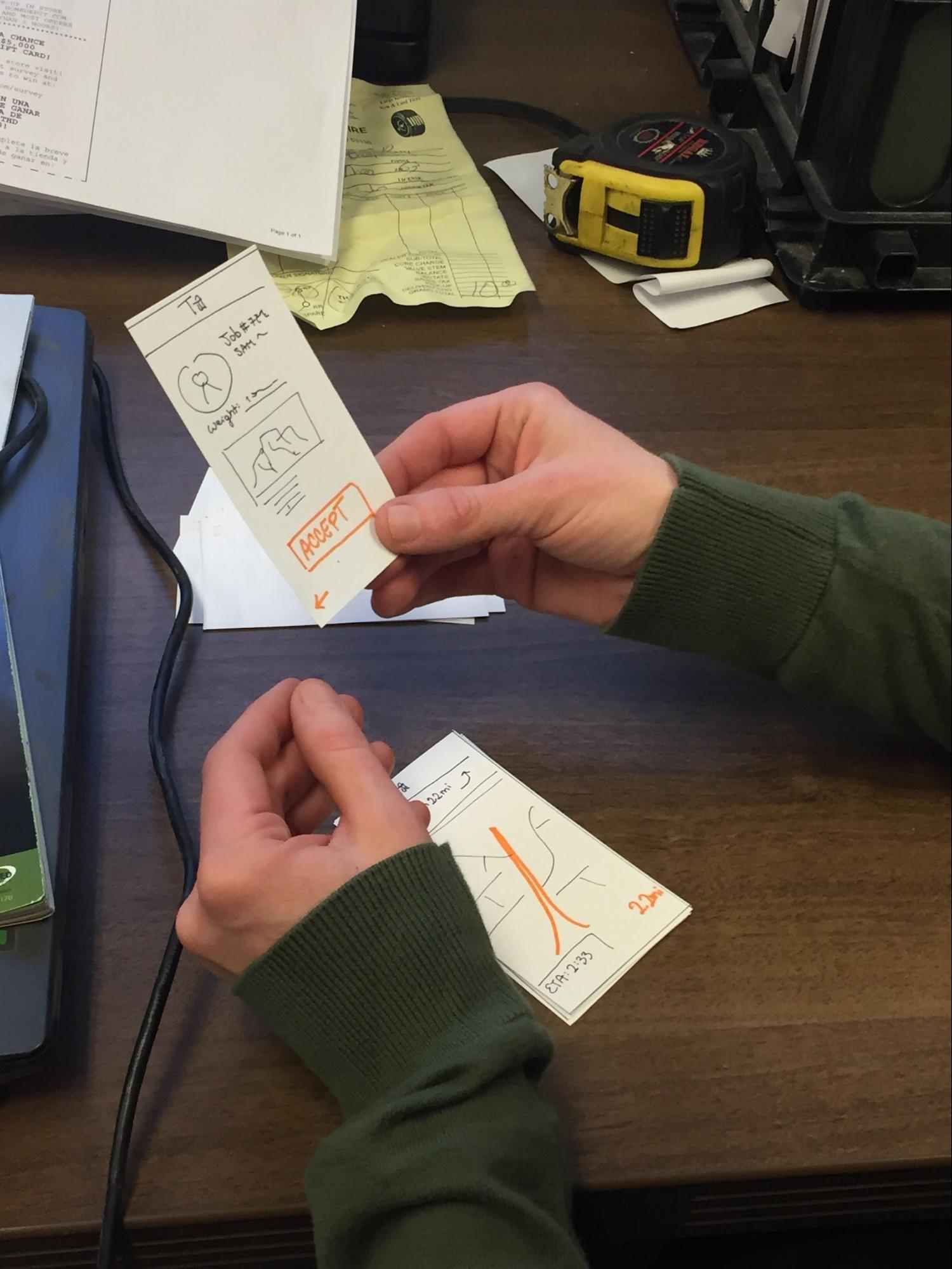
#1: Job Postings on Launch
Upon opening the app, the hauler would be able to see all the job postings requested by the users.
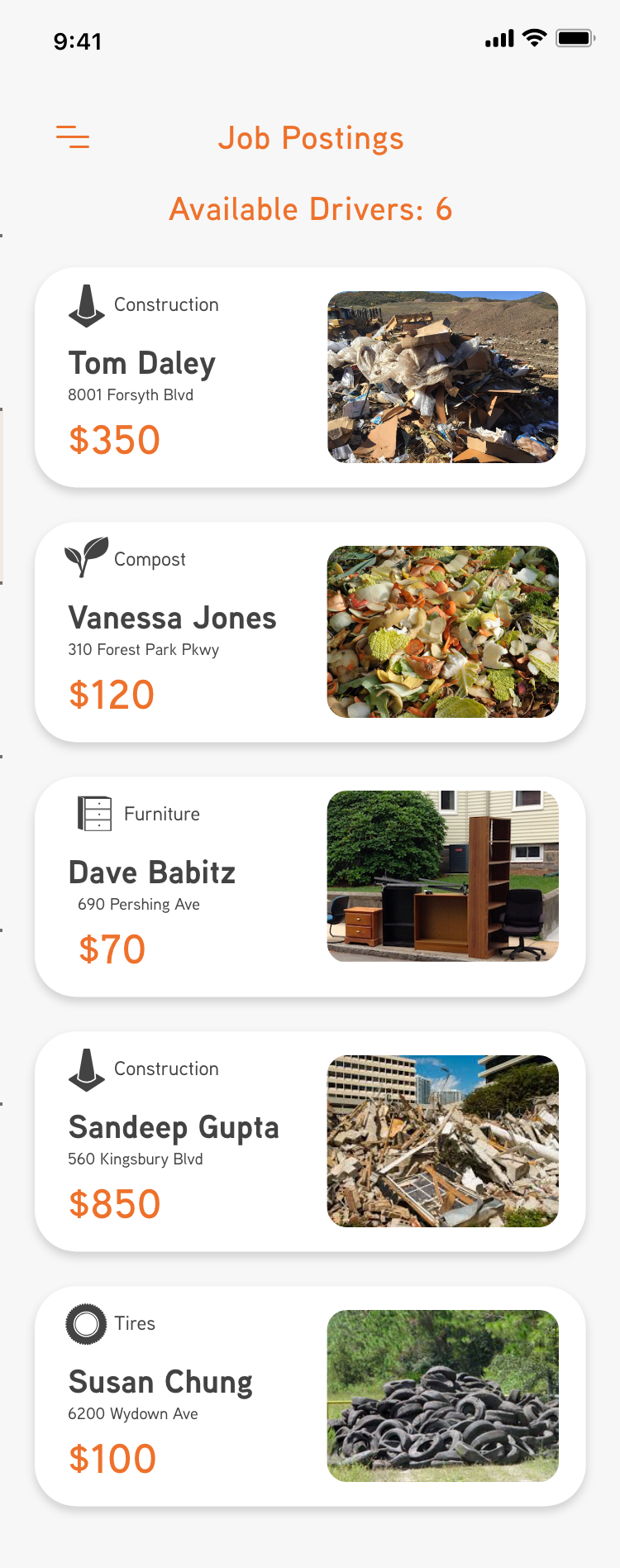
#2: Hauler Sidebar
The sidebar was an effective way of reducing clutter on the page, simplifying usability without sacrificing features.
